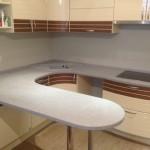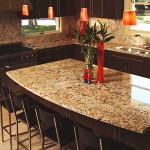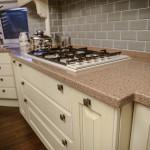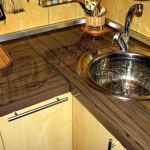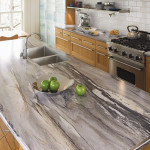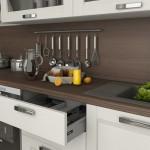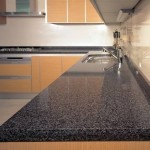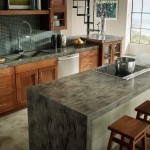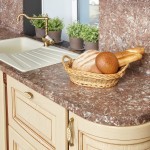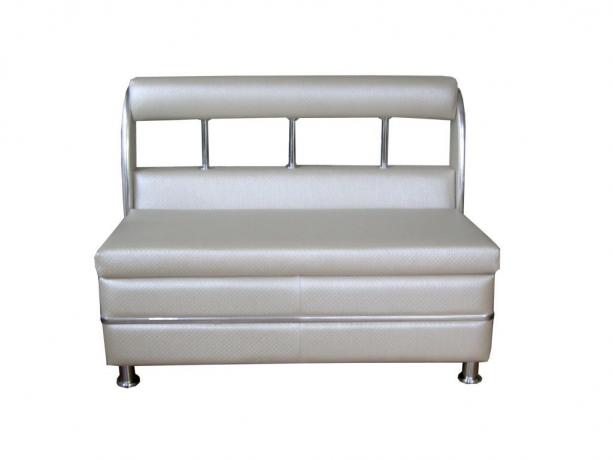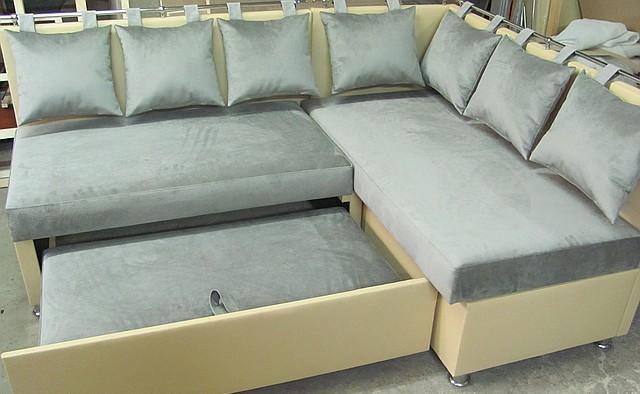Content
- 1 Basic requirements for countertops
-
2 Types and features of countertops
- 2.1 Laminated chipboard
- 2.2 Fake diamond
- 2.3 Quartz agglomerate
- 2.4 A natural stone
- 3 Tabletop dimensions
- 4 Finally
A modern kitchen should not only be as functional as possible, but also have an attractive appearance. Choosing the right countertop can help solve this problem. Today we will consider the most popular materials for this coating, we will analyze all their advantages and disadvantages.

The interior of the kitchen as a whole largely depends on the choice of the countertop.
Basic requirements for countertops
There are a lot of varieties of countertops these days and depends not so much on design as on the materials from which this or that product is made. At the same time, it will not be difficult to install the countertop with your own hands, it is much more relevant in this case it is the question of choice.
Modern coatings can be divided into several groups based on a number of parameters such as physical characteristics, material and cost. In view of such a variety of options, the answer to the question "which countertop is better for the kitchen" will be ambiguous for each individual person.

Top for kitchen cabinets must be resistant to moisture and high temperatures
But despite all the variety of materials and options, any coating used in the kitchen must meet several important parameters.
- High temperature resistance. One of the most important factors to look out for when choosing a kitchen cover.
- Ease of care. If you do not want to spend all your free time in the kitchen trying to clean the top headset from stains, try to choose a material that will be unpretentious in cleaning.

Choose durable materials - this will make your headset last longer
- Resistance to high moisture. Due to the fact that the kitchen is a room with a high level of moisture, the countertop must withstand any ingress of water on the surface.
- Strength. For your headset to serve you for years to come, choose a worktop that is not afraid of mechanical damage.

Do not forget about the appearance of the material - it must match the decor you have planned
In the selection process, one should also not forget about the external component. Such a coating will occupy most of the working area, so that it should organically fit into the existing interior.
Types and features of countertops
Manufacturers offer a huge selection of materials that differ not only in technical properties.
So, according to the composition of the material, countertops are:
- Laminated chipboard.
- Natural stone.
- Made of artificial stone with quartz filler.
- Made of wood.

The most popular are countertops made of natural and artificial stone, wood, chipboard,
Let's consider the benefits of each.
Laminated chipboard
Such countertops are made from chipboard (see also the article on chipboard worktop for the kitchen). At the heart of expensive countertops in this segment, imported moisture-resistant chipboard is used, which is laminated with plastic, with a thickness of about 1 mm.

Laminated chipboard (pictured) - perhaps the most budget material for framing a headset
pros: They are available in a wide range of colors, varying textures and excellent appearance. A wide price range will allow you to easily choose the best option with a favorable price / quality ratio.
Minuses: The main disadvantage of laminated chipboard is the poor resistance of its joints to moisture.

Chipboard joints are unstable to moisture, so they must be covered with decorative plugs
Fake diamond
What is the best modern kitchen countertop? Many will tell you that artificial stone products have many advantages over competitors (see also the article on artificial stone countertops for kitchen). The basis of the product is a sheet of plywood, on which an artificial stone is glued. The thickness of the "stone" layer in most cases is 12 mm.

Artificial stone is practically indistinguishable from natural
Artificial stone is made of polymer glue and multi-colored granules that perfectly imitate the composition of the natural one. You can get more information about the production of such countertops from the video materials. As a result, a very plastic material is obtained, from which curved shapes can be created at high temperatures, which is important for kitchens with radial facades.

Artificial turf is created from polymer glue and multi-colored granules
pros: Attractive appearance very difficult to distinguish from natural stone. Smooth and warm texture, pleasant to the touch, wide range of colors. Another advantage is the ability to connect the worktop without visible joints.
Minuses: Higher cost in comparison with chipboard counterparts. Insufficient resistance to external mechanical stimuli.

Quartz agglomerate does not tolerate mechanical damage
Quartz agglomerate
Such coatings are made by adding a binder resin to a mixture of granite and quartz chips. Plates are manufactured under high temperatures under vacuum. The thickness of the product is often 30 mm.

Quartz agglomerate is resistant to moisture, high temperatures and acids
pros: This material is resistant to liquids, does not absorb acids and solvents, which is an important advantage over natural stone. Also, quartz agglomerate is not susceptible to fractures and scratches. And modern technologies make it possible to make the joint of such countertops almost invisible.
Minuses: High price, which may not be affordable for every family budget. In addition, quartz agglomerate cannot boast of a wide range of textures.

The cost of a quartz agglomerate is not available to every family budget
A natural stone
When choosing which countertops are best for the kitchen, you should definitely pay attention to products made from natural stone. Naturally, they have their disadvantages, both in technical terms and in terms of price, however, nothing beats the texture and shade of natural stone.
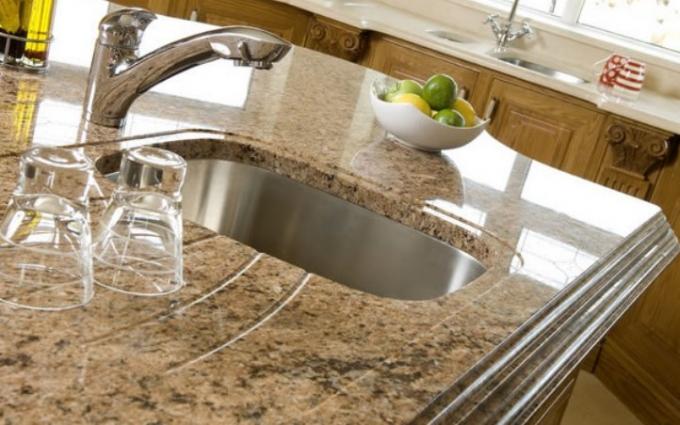
Natural stone is one of the most effective materials for worktops
Most often, granite is used for kitchens, since this stone is denser and less hygroscopic than other rocks. It does not require special care and does not absorb moisture. Its significant disadvantages are its high price and high weight.

Natural stone attracts with its exquisite appearance
pros: Just a delightful appearance, over the design of which nature itself seemed to try. The drawing of each of these countertops is unique, as nature created it. The material is not afraid of water or high temperatures and is considered one of the most durable.
Minuses: Not every kind of natural stone should be used as a headset top. For example, marble is not the best solution for countertops. Such material is easily dirty and prone to scratches.

Marble surfaces are easily exposed to mechanical stress
Natural wood
Natural wood countertops are durable and beautiful, however, they are demanding to maintain.
In most cases, such items are made from:
- Beech;
- Oak;
- Teak;
- Wenge;
- Merbau and some other types of wood.
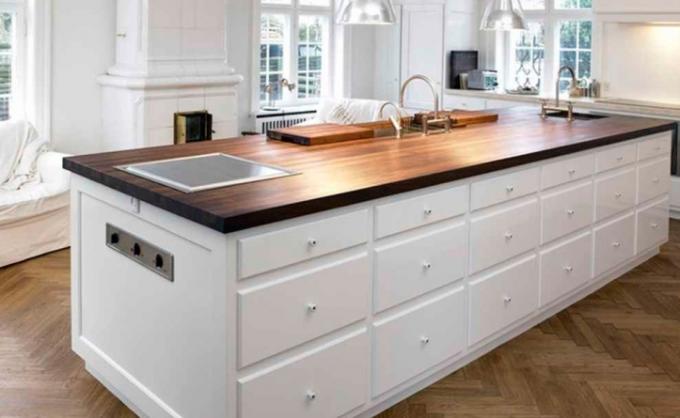
For the manufacture of countertops, beech, oak, teak, wenge and merbau are most often used.
pros: A great decorative component that allows you to fill the kitchen with an indescribable atmosphere and comfort. Some interior styles (for example, Scandinavian) are simply impossible to imagine without this material.
Minuses: Such countertops require regular treatment with a special solution, which includes all kinds of oils. The surface should be wiped off with a damp cloth and, in no case, do not use household chemicals.
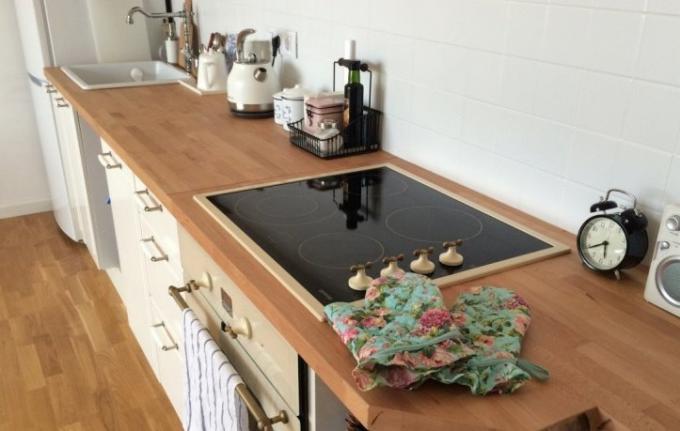
The tree needs regular impregnations to protect it from moisture
Tabletop dimensions
When deciding which kitchen countertops are best, you should also consider the size and shape of the stove. A small instruction will help you make the right choice.
When designing kitchen furniture, it is important to remember that a countertop is primarily a functional element, and only then a design element. Therefore, you should take into account the layout of the kitchen, the placement of working areas. But one of the most important factors to rely on is size.

The dimensions of the countertop largely depend on the size of the kitchen and your height.
- Height. It is an important parameter, since the convenience of working in the kitchen depends on it. It should be determined by taking into account the height of the person who is most often involved in cooking. This will avoid pain in the legs and lower back.
With a person's height below 150 cm, the tabletop should be 76 cm high, 150-160 - 86 cm. Further, every 10 cm of growth, the step should be increased by 3 cm. For tall people, whose height is 190-200 cm, a tabletop 1 meter high should be installed.
- Width. In most cases, manufacturers offer countertops with an optimal width of 62-65 cm.
- Thickness. It may vary within 2-6 cm. For example, a standard board made from chipboard is 28 mm wide. The average thickness of the moisture-resistant worktop is 38 mm.

Average thickness of worktops - 38 mm
Finally
When thinking about which countertops are best for the kitchen, do not forget to build on your needs and capabilities. A quality slab can be made from any material. Therefore, here everyone decides for himself, weighing the advantages and disadvantages of each specific product.
Thanks to our material, you learned about the main advantages and disadvantages of this or that material for the top of the headset and you can make a balanced choice. Also check out the suggested video - it will be useful to you.
Read also the article "Kitchen worktop: colors and rules for their selection."
Gallery







